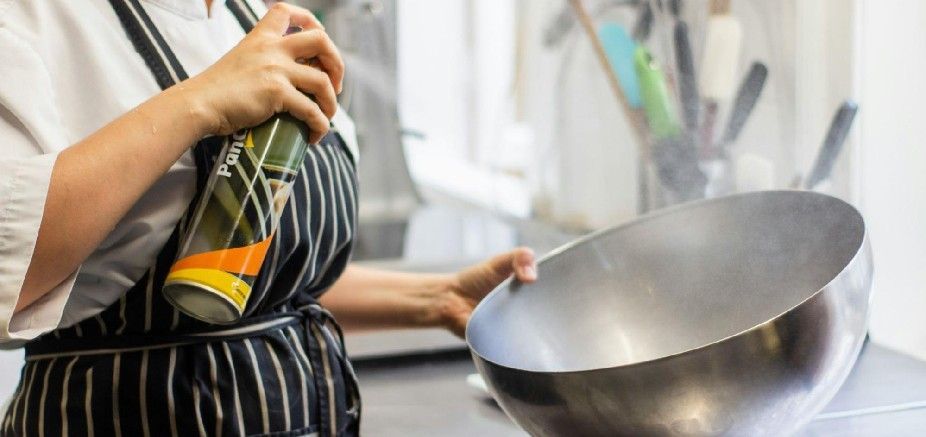Whether you’re running a restaurant kitchen, a workplace canteen, or a food catering business, it’s important to ensure all staff members adhere to the latest health and safety standards at all times. According to the HSE, more than 4,700 accidents occur in commercial kitchens, which equates to 13 people being injured daily. It also goes on to report at least 50% of kitchen accidents are caused by a combination of slips, trips, and falls.
The HSE estimates that these figures could be much higher; however, many small and minor injuries are not reported. We’ll discuss the UK legislation for commercial kitchens in more detail later in this blog, but for now, let's explore how you can maintain health and safety standards in your commercial kitchen.
How to meet safety standards in a commercial kitchen
Meeting safety standards in a commercial kitchen is crucial to prevent staff accidents, ensure food hygiene, and comply with health and safety regulations.
Here are some key tips:
1. Maintain a Cleaning Routine
It is important to maintain a high level of cleanliness and sanitation at all times in a commercial kitchen. All staff will need to be trained adequately to ensure they are aware of the required standard of cleanliness. The kitchen should also be cleaned regularly with suitable cleaning products to maintain hygiene levels and comply with health regulations.
- Clean and sanitise: All surfaces, utensils, and commercial catering equipment regularly to prevent contamination
Products we recommend:
◦ Jeyes Auto Combi Oven Cleaner 5L: Specialist detergent for automatic cleaning of combi ovens
◦ Jeyes Super Concentrated All Purpose Degreaser: Powerful multi-surface cleaner that dissolves grease, fat and ingrained soil
◦ Stainless Steel Cleaner Trigger Spray: For efficient cleaning and polishing of all stainless steel, chrome, aluminium and enamel
◦ All Purpose Cloth Roll: Ideal for light-duty kitchen cleaning tasks - Waste management: Ensure proper waste disposal and regular bin cleaning to avoid pest infestations. At Nobisco, we offer a wide range of waste management solutions designed to help commercial kitchens streamline their waste collection, disposal, and recycling processes.
◦ Black Heavy Weight Refuse Sacks: Durable and strong to withhold all kinds of kitchen waste
◦ Black Dustbin & Lid: Easy to clean and made from hard plastic, which is ideal for use in catering environments - Cleaning schedule: Create a daily, weekly and monthly cleaning schedule for staff to ensure no surface or area gets left behind
2. Train Staff on Food Safety Protocols
- Food safety certifications: Ensure all staff have adequate certifications and understand the importance of hygiene
- Cross-contamination: Prevent cross-contamination by using different utensils, chopping boards, and containers for raw and cooked foods
- Handwashing procedures: Provide ample handwashing stations with soap and disposable towels
Products we recommend:
◦ Lixal Anti Bactericidal Hand Soap: Bactericidal cleansing lather, free from solvents, harsh chemicals, and perfumes.
◦ Bulk Fill Soap Dispenser: For easy dispensing of antibacterial handwash.
3. Temperature Control
- Kitchen equipment temperatures: Regularly check that all fridges, freezers, and cookers maintain the correct temperatures for food safety (below 8°C for cold storage and above 63°C for hot food)
- Food thermometers: Use food thermometers to check the internal meat, poultry, and fish temperatures
4. Kitchen Ventilation
- Ventilation system: Install and maintain a good ventilation system to reduce heat, humidity, and airborne contaminants, which can create an unsafe kitchen working environment.
- Filter cleaning: Regularly clean air filters and exhaust hoods to prevent grease build-up and ultimately reduce the risk of fires.
5. Use of Personal Protective Equipment (PPE)
- Non-slip shoes: Safety footwear prevents slip accidents and falls in the kitchen.
- Heat-resistant gloves: Safety gloves when handling hot pans or trays, and appropriate aprons or uniforms to protect against spills.
6. Safe Storage of Ingredients and Chemicals
- Store cleaning chemicals safely: Keep cleaning chemicals away from food preparation areas to avoid contamination.
- Label containers: Use food labels for all food products, meats and other ingredients to avoid cross-contamination.
Products we recommend:
◦ Food Safety Labels
◦ Removable Allergen Label
◦ Date Code Genie Printer Lite Automated Labelling Solution
7. Health and First Aid
- First aid kit: Make sure there is a well-stocked first aid kit in an accessible location for all staff and ensure staff know where it is and how to use it.
- Report sickness or illnesses: Encourage staff to report any illnesses or symptoms of foodborne illnesses to avoid working while sick.
8. Regular Kitchen Safety Audits
- Kitchen safety checks: Carry out regular safety checks and audits to identify potential hazards such as faulty kitchen equipment, loose flooring, or outdated fire extinguishers.
- Emergency exits: Ensure all emergency exits are clearly marked, accessible, and free from obstruction.
UK Legislation for Health & Safety in Commercial Kitchens
Three main legislations cover health and safety in the UK’s commercial kitchens. These are The Health & Safety at Work Act 1974, the Provisions and Use of Work Equipment Regulations 1998, and the Management of Health and Safety at Work Regulations 1999.
All employers must ensure they are complying with these regulations by carrying out a workplace assessment to highlight the most significant risks and take effective measures to control them. Failure to abide by these regulations can result in stiff penalty charges and fines. Therefore, it’s important for businesses to fully understand these rules and ensure health and safety are managed in kitchens to avoid unnecessary sanctions.
By following these guidelines, you can operate your commercial kitchens efficiently while meeting safety standards that protect both your staff and customers.







